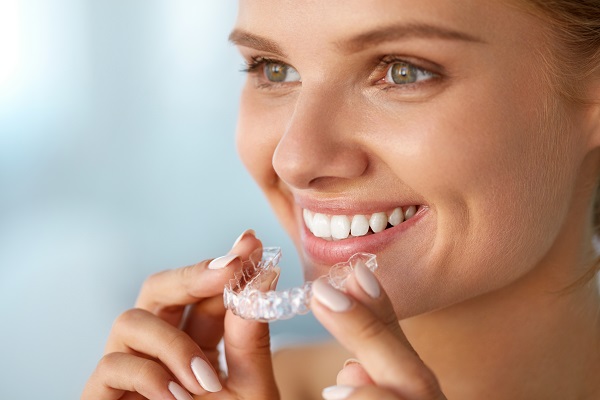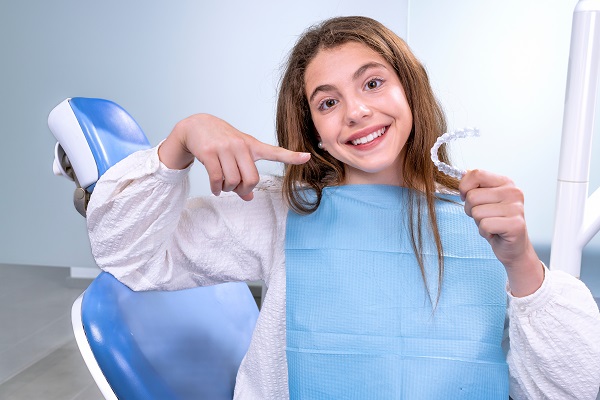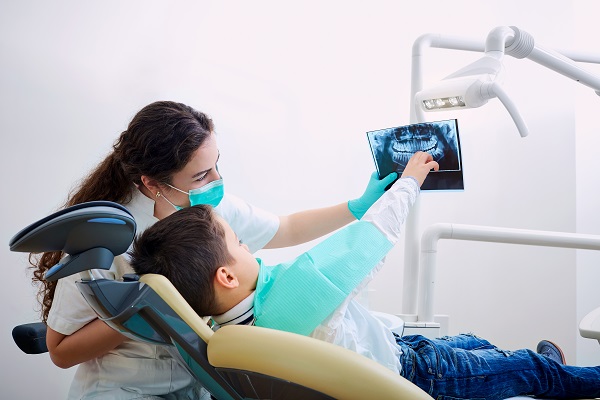Orthodontic FAQs [Guide to Invisalign®]

For a discreet way to fix poor teeth alignment, many patients choose the Invisalign® system. Before clear aligners like these were introduced, many adults would leave teeth alignment issues unfixed, since treatment required them to have highly visible metal braces in their mouth for up to two years. Thanks to Invisalign®, patients can now improve the alignment of teeth without compromising the way the smile looks with a bunch of metal brackets.
Popular questions patients ask
Here are answers to common questions people who are considering this teeth alignment treatment often ask:
1. What is it?
The process of getting teeth straightened with Invisalign® involves wearing removable clear aligners that gradually push the patient's teeth to a better alignment similarly to the way traditional braces do. However, there are no metal brackets or wires with this system
An aligner looks similar to a mouthguard used for sports. It fits tightly on teeth, applying pressure on them. These aligner trays are made with a patented thermoplastic called SmartTrack. The aligners are approved by the FDA, and they do not contain any gluten, latex or BPA.
2. Why choose Invisalign®?
One of the primary benefits of Invisalign® aligners is that they are virtually impossible to detect when worn. Another noteworthy benefit is how they can be easily removed when it is time to floss, brush, eat or drink. Users also get a more comfortable experience as there are no brackets or wires that can irritate the soft tissues in the mouth.
3. Who is Invisalign® for?
These aligners are great for adults and teenagers who are looking for a more subtle way to straighten teeth. Thanks to improvements to the original design, these devices can now be used to treat most common teeth alignment and bite problems.
Invisalign® is typically not recommended for children because the aligners need to be worn for at least 22 hours each day for the treatment to be effective. Young children tend to have a difficult time sticking to this schedule.
4. How long do treatments last?
Treatment periods can last anywhere from six to 24 months. More severe teeth alignment issues may require treatment beyond two years. During the course of the treatment, patients are required to wear thr devices for at least 22 hours each day. Not wearing the device as recommended or skipping a few days diminishes the results of the treatment.
5. Is it more comfortable than traditional braces?
This is another one of the benefits of going with Invisalign®. The way the treatment works, the patient gets several trays at the beginning. Each is worn for about two weeks before being replaced with one that applies more pressure. This gradual increase of the force applied to the person's teeth leads to a more comfortable experience for the wearer.
Get started with Invisalign®
Are you dealing with teeth alignment problems? A dental professional can guide you through the process of providing the discreet treatment you desire.
Request an appointment here: http://www.orthodonticswaynenj.com or call The Orthodontic Center Of Wayne at (973) 696-5220 for an appointment in our Wayne office.
Check out what others are saying about our services on Google: Read our Google reviews.
Recent Posts
Even though braces are common among teenagers, getting them is a new orthodontic experience for every patient. Teens and their parents tend to have many questions about braces and other orthodontic treatments for teens, when to get braces, and what having braces will be like. Here are some of the most common questions orthodontists hear…
The primary goal of early orthodontic treatment is to prevent and fix bite misalignments. Several causes, including genetics, the premature loss of primary (baby) teeth, and harmful oral habits (like thumb sucking) may lead to such anomalies. Orthodontic abnormalities might be congenital or occur during early childhood. Straight teeth can reduce the incidence of dental…
Invisalign® has changed how willing teenagers –– and everyone else –– are to start teeth straightening treatments. It provides an alternative to traditional metal braces that is virtually impossible to detect. Invisalign® treatments work the same way conventional braces work, the aligner trays exert a force on the patient's teeth pushing their teeth into better…
Oral health is foundational to good overall health. Through the help of an orthodontist and bite correction, difficulties with chewing or speaking can be overcome. The inability to ingest food or clearly articulate impacts both physical and mental health. Bite correction has the potential to change the course of an individual’s health and wellness.Changes in…


